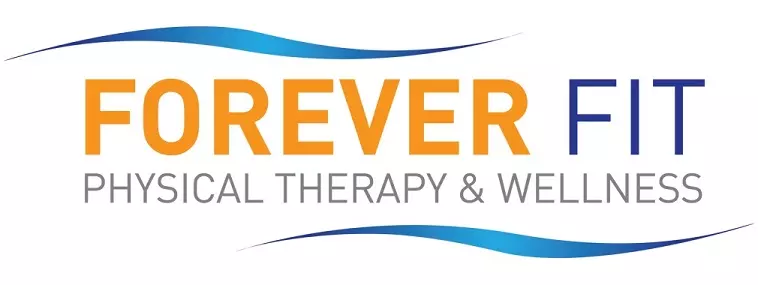If you’re an avid tennis player who has started feeling wrist pain during or after matches, you’re not alone. Tennis-related wrist pain is one of the most common overuse injuries in racquet sports. It can interfere with your game, daily activities and sleep.
The good news? With the right approach — especially through physical therapy — many players experience meaningful relief without needing surgery. In this guide, we’ll cover what causes tennis-related wrist pain, how to know when it’s time to seek professional help and five effective physical therapy exercises to ease wrist pain quickly and safely.
What causes tennis-related wrist pain?
Tennis-related wrist pain can stem from several factors, most commonly due to repetitive stress and overuse. Every swing, serve and volley places stress on the wrist joint. Without proper technique or adequate recovery, this stress can build up and lead to pain and dysfunction.
Some common conditions behind wrist pain in tennis players include:
- Tendinitis – inflammation of the tendons that support wrist movement
- Ligament sprains – overstretching or tearing of wrist ligaments (note: ligaments can only be sprained, not strained)
- Muscle or tendon strain – overstretching or small tears in wrist muscles or tendons
- TFCC injury – damage to the triangular fibrocartilage complex, a stabilizer in the wrist
Myth: Many players assume wrist pain is just part of the game. In reality, it often signals an underlying issue that needs attention, especially if the pain persists or worsens.
Signs it’s time to seek help for wrist pain
Occasional soreness is one thing — persistent or worsening pain is another. Here are signs it’s time to consult a licensed physical therapist:
- Persistent, nagging pain during or after play
- Swelling or tenderness in the wrist
- Decreased grip strength (e.g., difficulty holding your racquet or opening a jar)
- Clicking or catching sensations
- Limited range of motion
Expert tip: Early intervention can help prevent long-term damage. According to the American Physical Therapy Association, physical therapy can reduce pain and improve function in many musculoskeletal injuries without the need for invasive treatments.
How physical therapy can help relieve tennis-related wrist pain
At Forever Fit, we take a patient-first, compassionate approach to treating sports injuries. Physical therapy doesn’t just target symptoms. It addresses the root cause of pain.
Here’s how a physical therapist can help:
- Manual therapy – Hands-on techniques to reduce protective tension, improve joint mobility and relieve pain
- Therapeutic exercises – Strengthening and stretching routines tailored to your injury and sport
- Neuromuscular retraining – Techniques to improve coordination and prevent reinjury
- Pain education and load management – Helping you understand pain, avoid overuse, and build strength at the right pace
Our goal is to empower you with tools to heal, prevent recurrence and get back on the court confidently.
Physical therapy exercises that may help relieve wrist pain
Important: Always consult a physical therapist before starting any exercise program.
These beginner-friendly exercises are commonly used in physical therapy to help tennis players recover from wrist pain:
1. Wrist extension and flexion stretch
- Extend one arm in front of you with your palm facing down.
- Use your opposite hand to gently bend your wrist down, then up.
- Hold each position for 15–30 seconds.
- Why it helps: Increases flexibility and reduces tension in forearm muscles.
2. Forearm pronation/supination with light resistance
- Hold a light dumbbell or can with your elbow bent at 90 degrees.
- Slowly rotate your palm up (supination), then down (pronation).
- Perform 2 sets of 10 reps.
- Why it helps: Restores motion and strengthens forearm stabilizers.
3. Wrist isometric holds
- With your palm up, press your opposite hand down gently while resisting the motion.
- Hold for 5 seconds, then relax.
- Repeat for palm-down, thumb-side and pinky-side positions.
- Why it helps: Improves muscle endurance and joint stability without overloading.
4. Grip strengthening with a soft ball
- Squeeze a soft stress ball or therapy putty.
- Hold for 3–5 seconds, then release.
- Perform 2 sets of 15 reps.
- Why it helps: Builds functional strength and supports racquet grip.
5. Tendon gliding exercises
- Start with your hand open, then move through a series of finger positions (hook, full fist, tabletop).
- Perform 5–10 reps daily.
- Why it helps: Promotes mobility and tendon health.
How Forever Fit can help you find long-term relief
Forever Fit offers individualized treatment that puts you first. Our licensed physical therapists work with you to:
- Pinpoint the exact cause of your wrist pain
- Design a tailored plan to meet your needs and goals
- Help you return to tennis stronger and more confident
With locations across Maryland, including Silver Spring, Bowie, Rockville and more, care is never far from home. Plus, we provide accessible support and same-day appointment options at many locations.
FAQs about tennis wrist pain
Q: Can I keep playing tennis with wrist pain?
A: It depends on the severity. If the pain is mild and improves with rest, you may be able to continue with modifications. However, if pain worsens, it’s best to pause and seek guidance.
Q: Should I wear a wrist brace?
A: A brace can help in the short term, especially during high-impact activities. But long-term use without rehab may lead to dependence.
Q: How long does recovery take?
A: Most mild cases improve in 4 to 6 weeks with proper care. More complex injuries may take several months.
Q: What if my pain is from something other than tennis?
A: Many of these exercises and strategies still apply. A licensed PT can evaluate your wrist and tailor a plan accordingly.
Take the next step toward relief
You don’t have to let tennis wrist pain keep you off the court. Whether you’re just noticing symptoms or have been struggling for months, our team is here to help.
Ready to move freely and live fully again? We’re here to help you! Give us a call today or fill out our appointment request form to get your initial appointment scheduled with us.

